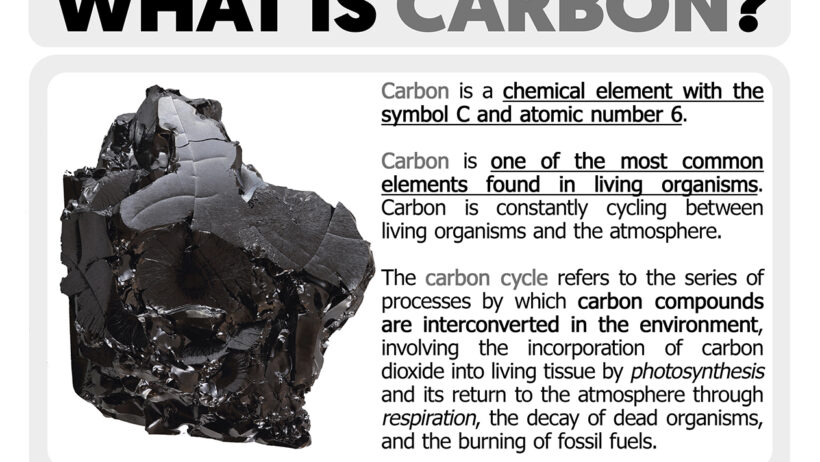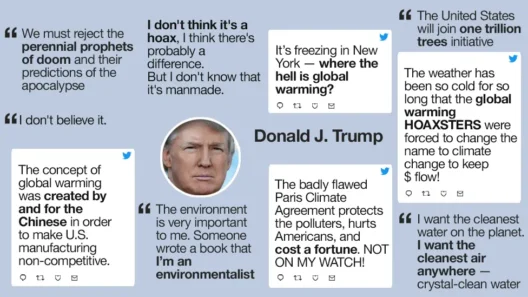Carbon, an element found abundantly in nature, is at the crux of the climate crisis that affects our planet. This seemingly innocuous element is not merely a building block of life; it is also a significant player in the intricate web of climate change. As we stand on the precipice of environmental disaster, understanding carbon’s multifaceted role is crucial. The future is now, and a paradigm shift in our perception of carbon is essential for safeguarding our planet.
Carbon exists in various forms—both beneficial and detrimental. In its elemental state, carbon is integral to life. It forms the backbone of organic molecules, including carbohydrates, lipids, proteins, and nucleic acids. Without carbon, life as we know it would be non-existent. Yet, this dualistic nature of carbon extends into the realm of climate change, where the same element that sustains life also has the potential to bring about its demise.
The modern combustion of fossil fuels has led to an alarming increase in atmospheric carbon dioxide (CO2) levels, exacerbating the greenhouse effect. The greenhouse gases trap heat in the atmosphere, leading to an escalation in global temperatures. It is critical to comprehend that not all carbon is harmful; rather, it is the excessive accumulation of CO2 due to anthropogenic activities that is problematic. Understanding this distinction can catalyze a change in our approach to energy consumption and environmental stewardship.
Furthermore, carbon is not solely a product of industrialization; it is also integral to terrestrial and marine ecosystems. For instance, forests serve as significant carbon sinks, absorbing large quantities of CO2 from the atmosphere. Similarly, oceans absorb about a quarter of the carbon emissions produced by human activities, but this has come with dire consequences, including ocean acidification. This phenomenon endangers marine life, disrupts ecosystems, and ultimately threatens food security. Recognizing the pivotal role of nature in carbon regulation can inspire more sustainable practices in resource management.
Central to addressing the carbon conundrum is the concept of carbon neutrality. Achieving a balance between emitting carbon and absorbing carbon from the atmosphere is not merely an ideal; it is a necessity. Many countries and organizations are now setting ambitious targets to become carbon neutral by mid-century. This commitment requires a radical transformation of our energy systems, transitioning from fossil fuels to renewable energy sources such as wind, solar, and hydroelectric power. This shift not only diminishes reliance on carbon-intensive fuels but also creates pathways for job creation in green technologies, thus marrying environmental health with economic prosperity.
However, the conversation around carbon cannot be one-dimensional. Carbon footprints—the total amount of greenhouse gases emitted directly or indirectly by an individual, organization, event, or product—serve as vital metrics in understanding our impact on the environment. Reducing carbon footprints requires collective action at multiple societal levels, from individual lifestyle changes to governmental policies that incentivize sustainable practices. Small changes in daily life, such as reducing vehicle use, conserving energy, and promoting sustainable consumption can cumulatively lead to significant reductions in carbon emissions.
In the corporate world, organizations are embracing sustainability not solely as a moral obligation but as a strategic advantage. Forward-thinking companies are recognizing that adopting low-carbon practices can enhance brand loyalty, attract investment, and meet consumer demand for eco-friendly products. By integrating carbon sustainability into their core business models, these organizations not only mitigate their environmental impact but also contribute to a larger cultural shift that prioritizes ecological conservation. This business model represents a conscious commitment to a sustainable future, proving that profit and planet can coexist harmoniously.
Moreover, innovation in carbon capture and storage technologies is paving the way for a greener future. Carbon capture and storage (CCS) involves capturing carbon emissions at their source, such as power plants, and efficiently storing them underground or repurposing them for various industrial applications. This technology is still in its nascent stages but holds immense promise for reducing atmospheric CO2 levels. Additionally, advances in biotechnological applications, such as algae biofuels, present revolutionary means of harnessing carbon in a way that contributes to energy production. These innovations encourage a bold rethinking of our carbon strategy and create new avenues for sustainability.
The educational facet of understanding carbon cannot be overlooked. Knowledge dissemination about the science of carbon, its impacts, and potential solutions is pivotal for fostering environmental awareness among the global populace. Empowering individuals through education can motivate communities to engage in grassroots initiatives that combat climate change. Schools, universities, and community organizations can play transformative roles by incorporating environmental curricula that explore the complexities of carbon and climate science.
As we move forward, advocacy for policies that promote carbon reduction on a national and international level becomes essential. Governments must implement robust regulations that limit carbon emissions, promote renewable energy, and support research and development in sustainable technologies. International agreements, like the Paris Agreement, signify a collective commitment to combat climate change, yet tangible action is required to adhere to these frameworks.
In conclusion, the future indeed is now. The discourse surrounding carbon is not merely academic—it is a clarion call for immediate and decisive action. Understanding carbon’s role in climate change empowers us to address the emergency we face with informed strategies and innovative solutions. Through collective action, education, and policy reform, we can navigate toward a sustainable future. Each step we take today will resonate through generations, and our legacy will be defined by how we respond to the carbon conundrum. It is crucial—vital, even—that we seize this moment to forge a planet that thrives, unabated by the pitfalls of carbon misuse.








